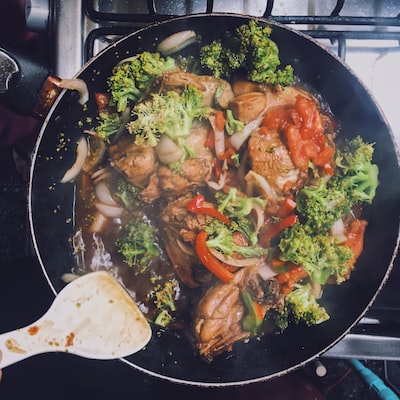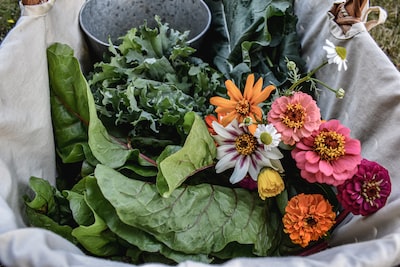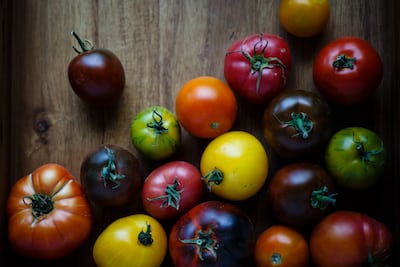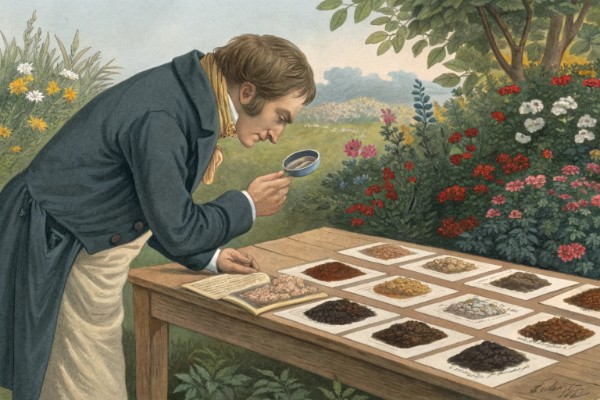What to Plant in September for a Beautiful Fall Garden
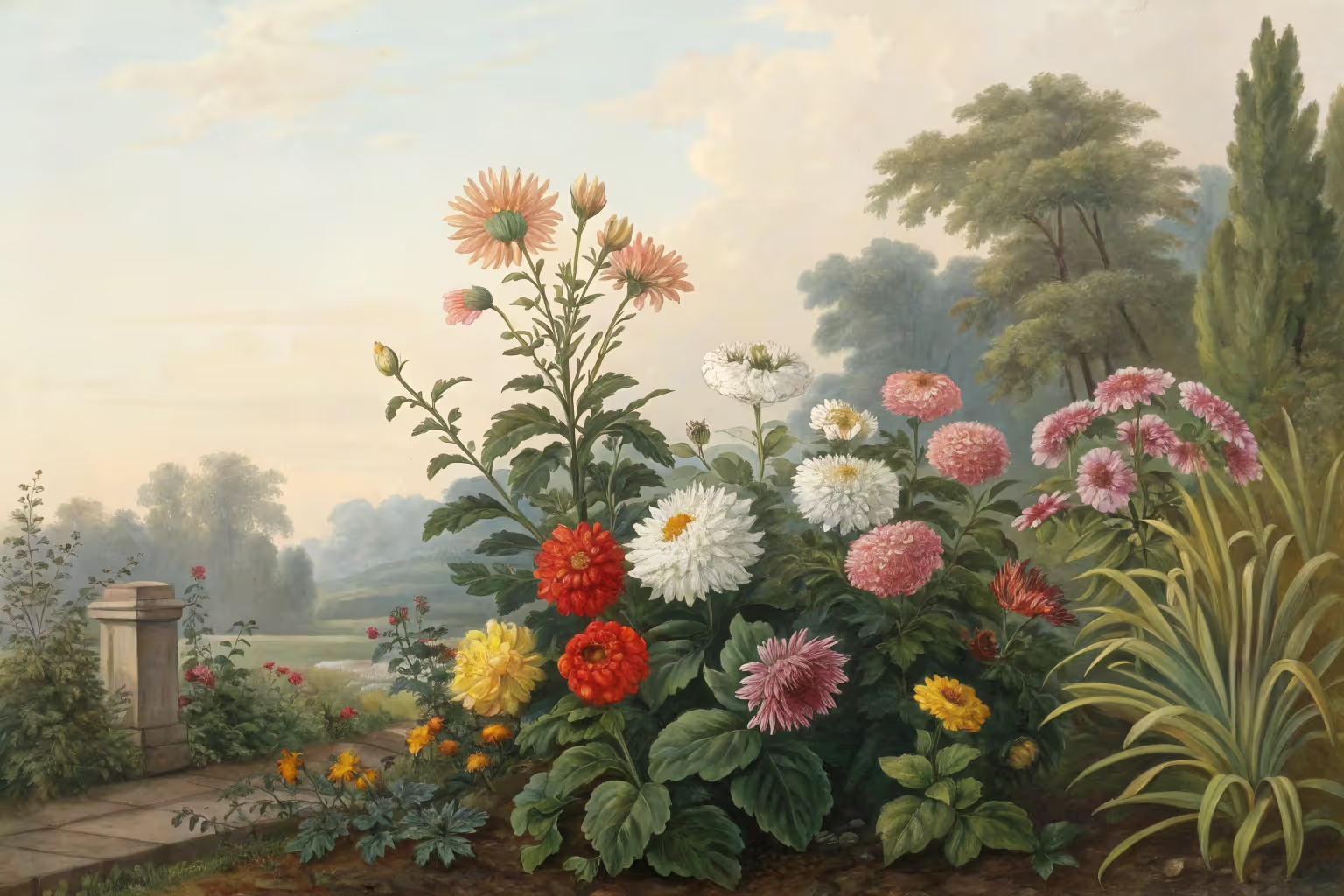
What to plant in September
Knowing what to plant in September gives you a head start on vibrant spring blooms and productive autumn harvests. Take advantage of cooler temperatures to sow leafy greens like spinach, kale, and lettuce; plant bulbs such as daffodils, tulips, and crocuses; or get garlic cloves nestled into the soil for flavorful summer dishes. Discover how planting thoughtfully now brings long-term rewards for your garden's productivity and beauty.
Cheatsheet: September Planting for Fall Color & Harvest
🌱 Vegetables to Sow
- Spinach, Arugula, Lettuce—sweetest flavor in cool soil
- Radishes—ready to harvest in 30 days
- Kale, Mustard greens—nutrient-dense; boosts immunity
- Turnips, Beets, Carrots—root crops thrive in 55–75°F (13–24°C)
- Garlic—plant now, harvest next summer; high in allicin
🌷 Fall Flowers & Bulbs
- Pansies, Violas, Calendula—bloom until hard frost
- Asters, Mums—attract pollinators, show peak color
- Daffodils, Tulips, Hyacinths (Spring bulbs)—chill over winter, flower early
- Crocus, Snowdrops—first to emerge after winter
🍀 Herbs to Direct Seed
- Cilantro—bolts less in cool fall
- Parsley, Chervil—grows until ground freezes
🏡 Tools and Products You'll Need
- Quality seeds and bulbs
- Compost or aged manure
- Mulch to insulate roots
- Trowel, gloves, watering can, rake
- Row covers for frost protection
📊 Quick Stats
- Fall veggies pack up to 50% more nutrients than summer harvests
- Autumn blooms feed pollinators prepping for winter
- Succession sowing boosts yield by 30%
🧑🌾 How-To Steps
- Prep beds with compost
- Sow seeds or bulbs 2x deeper than diameter
- Water gently; keep soil moist, not soggy
- Mulch to hold moisture, shield from chill
- Use row covers if nights drop below 40°F (4°C)
- Feed monthly with organic fertilizer
- Harvest greens before hard frost
What to plant in September for a beautiful fall garden
Soil still holds summer heat, air cools off, roots sprint while foliage takes it easy. I plan September like a chef plans mise en place, with trays of transplants, stacked bulbs, and a calendar taped to the potting bench.
“Autumn planting takes advantage of warm soil and mild air, which encourages strong root growth.” Royal Horticultural Society
What to plant in September by zone
- Zones 3 to 5: Direct sow spinach, arugula, radish, and mache; plant garlic late month; tuck in spring bulbs early; pot up pansies and violas; divide peonies and daylilies.
- Zones 6 to 7: Transplant kale, collards, and lettuce; seed carrots and beets for baby roots; plant garlic mid to late month; plant hardy mums, asters, and bulbs; start cover crops after harvest.
- Zones 8 to 9: Seed cilantro, dill, and Asian greens; plant snapdragons, stock, and pansies; set garlic late month to October; succession sow radishes; plant trees and shrubs for strong winter root growth.
- Zones 10 to 11: Prechill tulips and hyacinths; plant cool-season annuals like violas and poppies; sow lettuce and brassicas; transplant herbs like parsley; plant short-day onions where regional timing fits.
I still check soil temperature with a cheap thermometer, because germination hinges on it. Lettuce and spinach pop fast at 50 to 68 F, 10 to 20 C, while carrots like 55 to 75 F, 13 to 24 C.
Cool-season vegetables to sow or transplant now
Short days slow growth, so I favor fast crops and transplants. Track photoperiod and your first frost date, then back-time by each crop’s days to maturity.
- Spinach: Direct sow every 10 days, 1 cm deep, 2.5 cm apart, thin to 7.5 cm. For winter salad in cold zones, hoop and cover with light row cover.
- Arugula and Asian greens: Mizuna, tatsoi, and komatsuna stay tender and sweet in cool air, and flea beetles relax as nights dip below 50 F, 10 C.
- Lettuce: Transplant romaine and butterhead for fall heads, and direct sow cut-and-come-again mixes. Shade for germination if soil runs hot.
- Radish: French breakfast types finish in 22 to 28 days, and daikon relieves tight soil with a living drill bit of a root.
- Carrots and beets: Sow thick, thin ruthlessly, and keep the top 1 cm consistently moist for 7 to 14 days to prevent crusting.
- Turnips: Hakurei and Tokyo Market make sweet salad turnips by frost, while greens cook like chard.
- Kale and collards: Transplant sturdy starts; flavor and Brix climb after a light frost, 30 to 32 F, minus 1 to 0 C.
- Swiss chard: Transplant now for a long shoulder season, and mulch to stabilize soil temp.
- Cilantro, dill, parsley: Cool nights tame bolting, and flavor sharpens. I succession sow cilantro every two weeks until hard frost.
- Garlic: In zones 6 to 8, plant late September; north of that, early October. Plant cloves 5 to 8 cm deep, 15 cm apart, point up, mulch after a light freeze.
- Peas: In mild climates, fall peas are magic, but use powdery mildew tolerant types and trellis right away.
I use 0.5 oz row cover to speed growth and foil cabbage loopers, then switch to insect netting if moth pressure spikes. For slugs, iron phosphate bait and beer traps save my sanity after rainy nights.
Pro timing cheat sheet
- Radish: 22 to 35 days, sow weekly until 2 weeks before average first frost.
- Arugula: 25 to 40 days, sow weekly; thicker flavor below 55 F, 13 C.
- Spinach: 35 to 50 days, start now, protect under low tunnels for winter harvest.
- Lettuce heads: 45 to 60 days, transplant 3 to 4 weeks before first frost, harvest at half-size if needed.
- Carrots: 60 to 80 days, sow now for baby roots or overwinter under mulch for spring sweetness.
- Beets: 50 to 70 days, baby beets in 35 to 45 days from a September sowing.
Flowers for instant fall color
September color pulls a garden together like salt on a steak. I load containers and borders with plants that shrug at cold nights.
- Pansies and violas: Bloom through 20 F, minus 6 C, if hardened off and mulched; deadhead weekly for fresh buds.
- Asters and hardy mums: Plant now for a long show; in future years, buy mums in spring for best winter survival.
- Snapdragons and stock: Plant in zones 7 to 10 for fall through spring bloom; pinch once for branching.
- Ornamental peppers and kale: Pair saturated fruit with ruffled foliage in pots near the door.
- Perennial workhorses: Divide and replant echinacea, rudbeckia, and shasta daisies, then water deeply to settle crowns.
- Grasses: Pennisetum and panicum light up in slant light; leave seed heads for birds.
Spring bulbs to plant in September
Bulbs planted now set roots in warm soil and blast out of winter ready to go. Plant depth at 3 times bulb height, and face the pointy end up.
- Daffodils: Deer proof, long lived, and forgiving in clay; plant large-nose bulbs for bigger clumps next spring.
- Tulips: Highest drama, lowest patience with critters; use 12+ cm circumference bulbs for premium display, add grit for drainage.
- Crocus and species tulips: Naturalize in turf and dry borders; quick nectar for early bees.
- Alliums: Structural spheres that bridge late spring gaps; plant in clumps for impact.
- Hyacinths: Pot a dozen in a bowl for the doorway, and wear gloves, the bulbs can irritate skin.
- Fritillaria: Draining soil needed; the skunky scent can repel voles around tulips.
In warm zones, prechill tulips and hyacinths 6 to 8 weeks at 40 to 45 F, 4 to 7 C, then plant into cool soil. I stash mine in a fridge away from fruit to avoid ethylene exposure.
Trees, shrubs, and perennials love September
Roots keep growing until soil hits roughly 40 F, 4 C, so fall plantings gain a quiet head start. Water 2.5 cm per week for the first month, then taper with rain and mulch 5 to 7.5 cm, keeping mulch off stems.
University of Minnesota Extension notes that woody plants continue root growth well into late fall as long as soil remains above 40 F, 4 C.
I plant on overcast days, and I cut blooms off new perennials so energy stays below ground. A simple soil test guides pH targets, 6.0 to 6.8 for most ornamentals, 6.2 to 7.0 for lawns.
Cover crops and soil health
September is perfect for living mulch that feeds microbes and builds tilth. I choose mixes by C:N ratio, winter hardiness, and how I plan to terminate growth in spring.
- Winter rye: Cold tough and high biomass; great for erosion control on slopes and heavy feeders.
- Oats: Winterkilled in cold zones, leaving a soft mulch that is easy to plant into next spring.
- Crimson clover and hairy vetch: Fix nitrogen, feed pollinators, and add protein to carbon-heavy residues.
- Tillage radish: Big taproots shatter crust and scavenge nutrients before winter leaching.
I mow or crimp in spring and cover with cardboard or compost for a no-dig bed. In small spaces, a rye plus vetch mix pays back with easier weeds and darker crumbly soil by May.
Lawns and meadows in September
September is prime time to seed cool-season turf like tall fescue or Kentucky bluegrass. I core-aerate, topdress 0.6 cm compost, aim for pH 6.0 to 6.8, and seed tall fescue at 5 to 8 lb per 1000 sq ft, 24 to 39 g per m².
Skip pre-emergent if you plan to seed. For meadows, sow native mixes in late September to bank natural stratification, then press seed-to-soil with a roller or board.
What to plant in September: smart shopping list
- Bulbs: Choose tulips 12+ cm circumference, daffodils 12 to 14 cm, and alliums with firm, heavy feel.
- Vegetable starts: Stocky, dark green leaves, no flowers yet, roots just circling the cell, not pot-bound.
- Seed: Quick maturing varieties, mildew resistance on lettuce and peas, pelleted carrot seed for even spacing.
- Cover crop mixes: Read inoculant info on legumes, check seeding rates per m², and dates for your zone.
- Compost and mulch: Screened compost for beds, shredded leaves or pine fines for a breathable 5 to 7.5 cm top layer.
- Tools and supplies: Soil thermometer, lightweight row cover 0.5 oz, hoops, slug bait, and a simple pH kit.
I like buying bulbs early for the best grades and storing them cool and dry until planting. For vegetables, I mix organic and open-pollinated seed with a few hybrid workhorses for reliability under pressure.
Quick comparisons: top picks for a beautiful fall garden
- Fastest color annual: Violas establish in 7 to 10 days and flower sooner than pansies.
- Toughest fall veggie for beginners: Arugula, because it germinates in cool soil and forgives uneven watering.
- Best cover crop for clay: Rye plus tillage radish, roots pry open tight ground and add organic matter.
- Deer resistant bulbs: Daffodils and alliums, reliable even along woodland edges.
- Most fragrant bulb for containers: Hyacinths, a dozen in a low bowl by the steps works every time.
- Best fall pollinator plant: Asters, with liatris seed heads left standing for birds.
First frost math and microclimates
I plan by the 1991 to 2020 NOAA normals for average first 32 F, 0 C, then give myself a 7 to 10 day buffer. South-facing walls, stone edging, and raised beds buy a few extra safe nights for leafy crops.
Cover lettuce and basil any night forecast to 34 F, 1 C, since radiative cooling can dip your bed below air temp. Water the evening before frost to store a little thermal mass in the soil.
My September routine
Coffee in one hand, soil thermometer in the other, I check beds before the sun gets rowdy. I plant greens at dusk so roots settle in cool conditions, then I set a beer trap for the night crew that chews holes in mustard.
I keep notes on what finished before frost and what needed a row cover. The next year runs smoother because the calendar tells the truth my memory tries to edit.
Credible sources I trust and use
- USDA Plant Hardiness Zone Map, updated 2023, for zone shifts and local baselines.
- Royal Horticultural Society, Autumn planting guidance on roots, soil warmth, and aftercare.
- University of Minnesota Extension, root growth of woody plants continuing above 40 F, 4 C soil temperatures.
- Cornell Vegetable Growing Guides, crop spacing, temperature ranges, and disease resistance notes.
- NOAA Climate Normals 1991 to 2020, average first freeze dates for planning.
- State Cooperative Extensions, bulb depth rules and chilling advice for warm climates.
What to plant in September comes down to timing, soil temperature, and a little nerve. Plant a bit earlier than feels safe, cover on cold nights, and the fall garden pays you back fast.

Want smarter plant choices? 🪴
Frequently Asked Questions About September Planting
Can I start vegetable seeds directly outdoors in September?
Yes, you can directly sow many vegetable seeds outdoors during September. Plants such as spinach, radishes, and lettuce germinate readily in cooler soil temperatures (50–65°F / 10–18°C). Ensure the soil remains evenly moist to foster healthy seedling development.
What flowering bulbs are suitable for autumn planting?
Autumn is ideal for planting bulbs, including daffodils, tulips, and crocuses. Set bulbs in well-draining soil at a depth roughly two to three times their height to promote optimal root growth before winter frost.
Should perennials be added to the garden during September?
September presents favorable conditions for adding perennial plants such as peonies, daylilies, and echinacea. Cooler temperatures (60–75°F / 15–24°C) allow perennials to establish strong root systems before winter.
Are herbs suitable for autumn planting?
Culinary herbs like parsley, cilantro (coriander), and chives thrive when planted in cooler late-season soil. Sow herb seeds or transplant seedlings outdoors approximately four to six weeks before the first anticipated frost for best results.
Can fruit bushes and trees be planted effectively during September?
Yes, planting fruit bushes and trees such as raspberries, blueberries, and apple trees in September encourages stable root growth. This ensures a healthy start come springtime, as soil temperatures between 55–70°F (13–21°C) support rapid root establishment.
How late can fall-planted vegetables be harvested?
Vegetables planted in September, including greens like kale and Swiss chard, can typically be harvested through late autumn into early winter. Extend harvests by protecting plants with cold frames or frost covers during colder nights.
What to plant in September? Think flavor, color, and next spring. Sow cool-season greens like spinach, arugula, lettuce, and kale, plus radishes, beets, and carrots. Set broccoli and cauliflower starts. Plant garlic and spring bulbs like daffodils and tulips. Add mums, asters, violas, and ornamental kale for a last hit of bloom.
Prep beds with compost, water deep, mulch. Seed cover crops to feed tired soil. Use smart companion planting. Keep nectar coming for pollinators. Watch your frost date; row cover buys time. Hungry for more, slide into what to plant in October and keep the season rolling.
Pro Tips: Maximizing September Plantings for a Vibrant Fall Harvest
Interplant to Optimize Space
- Sow spinach or radishes between slower-growing brassicas such as cabbage and broccoli to maximize bed productivity without crowding.
- Interplant garlic bulbs among strawberries; garlic acts as a natural pest repellent and shares compatible root zones.
Boost Soil Life with Cover Crops
- Plant quick-germinating rye or clover cover crops in empty beds to prevent weed emergence and enrich soil nitrogen before next spring planting.
- Research indicates cover crops boost beneficial soil microbes by up to 50% within just six weeks.
Stagger Succession Sowings
- Sow leafy greens like lettuce, kale, and Swiss chard in weekly intervals from early through late September to achieve continuous harvest through fall.
- Succession sowings yield 30% more usable crops per square foot compared to single planting dates.
Increase Crop Protection
- Set lightweight row covers (floating fabric) over newly sown seedlings to maintain an optimal temperature between 65-75°F (18-24°C) and deter pests.
- Position cold frames over herbs and greens after planting to assure steady growth even as nighttime temperatures dip below 50°F (10°C).
Enhance Nutrition through Companion Pairings
- Pair late-summer carrots with onions or chives; their aroma wards off carrot flies, and carrots support beneficial mycorrhizal fungi helpful to onions.
- Studies note certain companion pairings increase nutrient density of vegetables by approximately 15-20%.
Find out which plants will thrive in your garden!
Answer a few fun questions and get custom plant recommendations perfect for your space. Let’s grow something amazing together!

start your season
